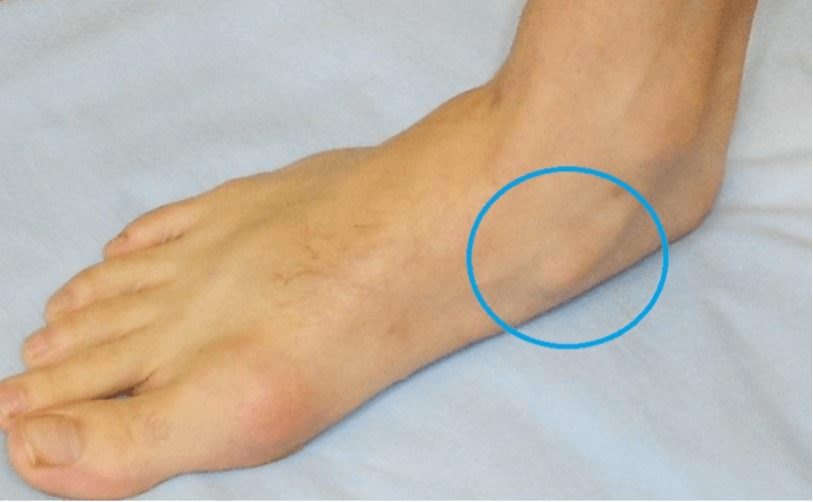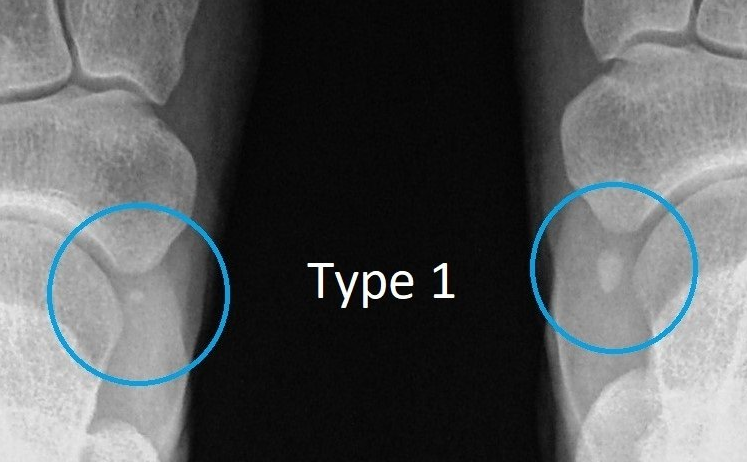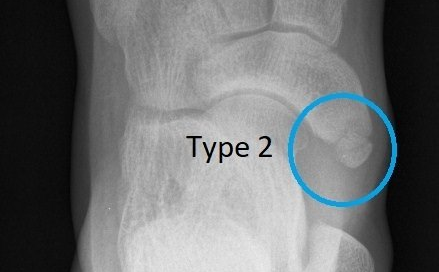Accessory Navicular
What is an Accessory Navicular?
An accessory navicular is an extra piece of bone located on the inner (medial) side of the foot, just below the ankle.
Please see Foot - Anatomy and Imaging
for more information on the navicular bone.
It is present from birth
and is due to incomplete formation of the navicular bone. It can be affect both feet.
There are three types of accessory navicular
based on size and location seen on X-ray (see images below) or other scan:
- type 1: small round bone inside the tibialis posterior tendon insertion
- type 2: large triangular bone attached to the rest of the navicular by fibrous tissue or cartilage
- type 3: bony enlargement.
Who do Accessory Navicular Affect?
An accessory navicular is present in about 5% of people. While usually asymptomatic, a type 2 accessory navicular can become "unstable" and inflamed, causing pain.
It is often diagnosed in teenagers and younger adults. Some people with flat feet have these extra bones.
Symptoms of an Accessory Navicular
The majority of the people with an accessory navicular have no symptoms. However, symptoms can include:
- medial arch pain worse with sport and stairs
- a swollen bump just below the inner ankle (see image).
Symptoms can be triggered by an "ankle sprain" or an increase in activity.
How is an Accessory Navicular Diagnosed?
The diagnosis of an accessory navicular is usually straight-forward after:
- taking a detailed history
- performing a relevant examination of the foot.
Weight-bearing X-rays show if an accessory navicular is present and which type it is (see images above - types 1 and 2). MRI confirms if there is associated inflammation (oedema).
How is an Accessory Navicular Treated?
Non-surgical treatment
Non-surgical treatment is always tried and can work.
This includes immobilisation using a "moon-boot", ice, anti-inflammatory medications, cortisone injections and arch supports.
Surgery for symptomatic accessory navicular
If non-surgical treatment does not work or pain keeps coming back, surgery may be required.
This involves removal of the accessory navicular bone (modified Kidner procedure) and occasionally other procedures.
Please see Accessory Navicular Removal
under the TREATMENTS menu for further information.
















